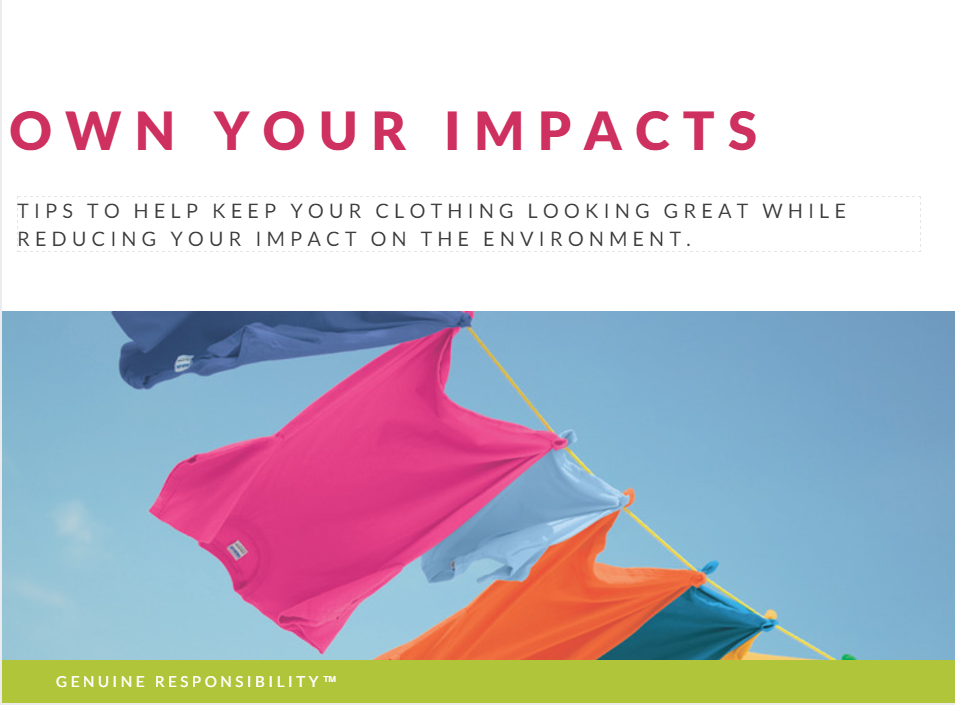Tips to Help Your Clothes Last Longer and Reduce Your Footprint

Did you know that the consumer use of products is the largest contributor to the environmental footprint of almost all the products you buy? A recent study by researchers from the Norwegian University of Science and Technology's Industrial Ecology Program1 found that consumer’s impact on the environment after the purchase of products such as clothing was responsible for more than 60 percent of that product’s greenhouse gas emissions and up to 80 percent of water use.
Gildan conducted its own life cycle analysis (LCA), in collaboration with Quantis Canada, to study the environmental impact of its best-selling white 100% cotton medium-sized T-shirt (style 2000). The analysis looked at the product’s impact on the environment throughout its life cycle, starting from the cultivation of the raw materials through the manufacturing phase to the products use (and reuse) and end of life.
The Gildan LCA confirmed the important role that consumers have on the overall footprint of the product. The largest impacts came from washing, drying and ironing.
Gildan, a vertically integrated manufacturer that controls almost every phase of the production process, has continually invested in technology to reduce its footprint. In its last Corporate Citizenship report Gildan reported a reduction in water usage intensity by 17% and greenhouse gas emissions intensity by 34% from 2010 levels.
While Gildan takes responsibility to continue to look for more sustainable solutions, it also encourages customers to make changes and create an even bigger positive impact on the overall footprint of its products.
In the spirit of World Environment Day, here are 10 handy tips for maximizing the life of your clothing, ensuring your garments look and feel good while minimizing environmental impacts that come from the use of water, energy and cleaning products.
1. Reference: Diana Ivanova, Konstantin Stadler, Kjartan Steen-Olsen, Richard Wood, Gibran Vita, Arnold Tukker and Edgar G. Hertwich. 2015. Environmental Impact Assessment of Household Consumption. Journal of Industrial Ecology. DOI: 10.1111/jiec.12371 -http://onlinelibrary.wiley.com/doi/10.1111/jiec.12371/abstract

